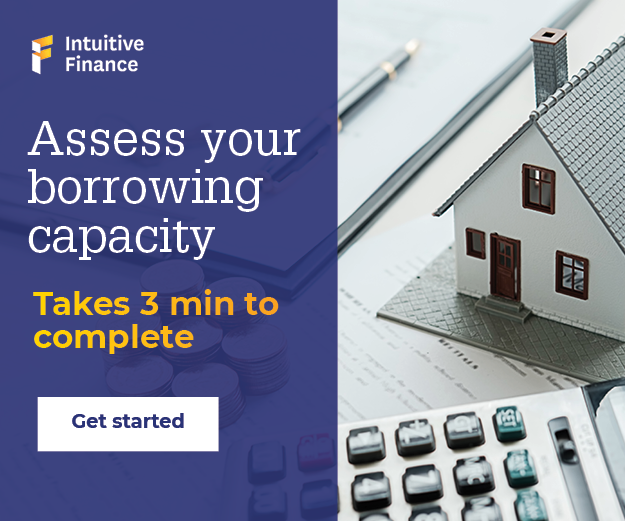Your complete guide to easements on property
When you buy real estate for the first time, you sometimes come across a bunch of unfamiliar terms.
What’s conveyancing? What’s a pre-settlement inspection? What’s a trust account?
And another term that is probably relatively unusual to new developers or investors is “easement”.
So, in this article we’ll answer what is an easement on a property, so that you’re not left scratching your head if it ever pops up during your next real estate transaction.
What is an easement on a property?
In simple terms, think of an easement like an invisible pathway drawn onto a property and someone other than the person who owns that property can walk on that pathway through the property whenever they like.
There are other types of easements, that are in the air and protect someone’s access to light and air (or the view), but the easiest way to understand this concept and answer the question ‘what is an easement on a property’ is to begin with the pathway on the ground.
What are easements and why are they important for developers?

OK, we’ve covered the basic explainer, now you’re ready for more technical information.
The legal definition of an easement is “the right to cross or otherwise use a portion of someone else’s land.”
But what does that mean exactly?
Well, it can mean that you can’t build over that portion or easement of land because it’s almost like sacred ground.
Now that doesn’t mean that your new property is located on an old cemetery or burial ground. It means that the easement is perhaps land that contains essential services.
That’s why it’s vitally important for small developers to thoroughly understand easements before they purchase a property because it can have an impact on whether the project is still financially viable.
Buyers can usually find the necessary information on the location of any easements on the property title.
How to find easements on my property
If you’re reading this and asking yourself, ‘Is there an easement on my property?’ but you’re not sure how to find out, then rejoice, for this section will answer the question, ‘How to find easements on my property Victoria’.
It can be a simple matter to find out if you have an easement on your property. If you still have the paperwork from the sale transaction (filed away in the back of a filing cabinet, most likely) then this paperwork will probably include a copy of the title deed.
On that title there will be a section heading that includes the word easements, the exact wording may vary from state to state.
It will describe the easement and who holds the rights to the easement. Sometimes there may be a map or diagram or satellite image of the property with the easement marked.
If you don’t have the title, you can do a title search online (for a fee) and this will give you the information about your easement (or lack thereof) that you’re looking for.
Easement on property NSW:
To learn if there is an easement on property in NSW a visit to the Land Registry Services website, https://www.nswlrs.com.au/ will give clear instructions on how to conduct a title search (and a schedule of fees).
Easement on property QLD:
Visit the Resources Department website to conduct a property and title search by address. You can search by address and the fee is around $20 to $30 for the resulting report, which will tell you about any easement on property QLD. https://www.resources.qld.gov.au/qld/housing/property-search#page=search
Easement on property Victoria:
In the garden state, the Victorian Land Registry Services offers property searches through its Landata database. Most searches take only a few minutes and you will be charged a nominal fee to find if there is an easement on property Victoria.
What are the different types of easements?
An easement is the right over another person’s land for a specific purpose, but what are those purposes?
One example is a carriageway. This easement is an old term for what is essentially a shared driveway.
Most commonly these easements prevent the lot without road access from being landlocked.
In most cases, an easement will burden one lot while benefiting another. If we look at the example of a carriageway, the easement will burden the lot it is over, but benefit the lot that it allows access to.
Examples of different easements include:
- Right-of-way easement (easement of way) – is where people are allowed to pass through a defined strip of land on the property.
- An easement for services – is to convey essential services to a community of people. E.g. electrical, gas, water, or telephone lines.
- Easements of support (pertaining to excavations) – similar to an easement for services but will require excavation works e.g. establishment of drainage pipelines, natural gas lines power, telephone lines.
- Easements of “light and air” – this may restrict the construction of walls or buildings in favour of another party’s access to light and air (or views in other words).
- Rights pertaining to artificial waterways and sewerage – this deals with rights and restrictions for waterways, canals or sewerage.
What is a utility easement on a property?
A utility easement on a property is one of the most common forms of easement, also known as an easement for services (see dot points above).
A utility easement is simply an easement that gives access to a utilities provider to infrastructure that runs through your lot, such as sewer pipes, stormwater drains, telephone lines, electricity and cable lines.
A utility easement covers a range of service providers, who generally don’t require permission to enter the property. For example, if you have a sewerage easement on property and there’s a damaged pipe, maintenance crew will need immediate access and can’t sit around waiting for you to get home from work!
Generally speaking, having a sewerage easement on property won’t impact your use of the property at all, unless there’s an emergency!
The same can be said for a stormwater easement on property. Generally, they won’t impact your day-to-day use of the property. It’s only if you are buying to develop the property or make substantial changes that a stormwater easement on property, or any easement for that matter, would become an issue.
How to find out about easements on property
If you are thinking about buying a property for development purposes the question of what is an easement on a property is one you want to answer very early on, so you don’t spend time and money drawing up plans only to find out at settlement (or afterwards!) that there are easements blocking your way.
To find out if there are easements on a property you are considering purchasing, you can instruct your conveyancer to investigate, or you can do the legwork yourself.
In most states, a simple google for ‘how to search for easement on property’ with your state will yield the result you’re looking for.
Once you have identified the government department responsible for the title registry it is a simple matter of completing the details you know (all states let you search by address, but in some instances you may need the lot number or other identifying detail). Learning how to search for easement on property is very simple and only cost a fee, which will vary from state to state.
Can I dispute an easement on a property?

When it comes to an easement on property, just as there are many different types, there can be disputes that arise, especially when the easement favours one landowner over the other.
If, for example, I’ve discovered that I have an easement on my property in the course of investigating to develop the property, it may be highly inconvenient, even costly. This might give rise to a dispute.
If there are easement disputes, it’s recommended that independent legal advice be sought to ensure that each party’s rights and obligations are clarified.
Legislation regarding easements can vary so it’s important to source legal advice in the relevant state or territory that the property is located.
In Queensland, for example, to enable the rights of an easement to be enforced, it must be registered on the title of the land burdened and the land that benefits from the easement.
It’s also recommended that when a property is being purchased that your conveyancer or lawyer determines whether any easements are registered on the title and, if so, whether there is any impact by the easement on your intended use of the land.
An easement can only be changed or removed when both parties agree to it. If no agreement can be reached, the matter can be taken to court for a decision.
Developers must also apply to the relevant government department for permission to have an easement removed or changed.
Intuitive Finance – the smart choice
Investing in, or developing, property can introduce you to a number of relatively obscure concepts.
Easement is one such term that might be unfamiliar but it’s vitally important that you understand what they are and how they can impact your development plans.
The world of banking and finance can be a pretty daunting one for both novice and sophisticated investors and since our establishment in 2002 we’ve focused on providing outstanding service and business standards.
This approach was vindicated when we were named Victoria’s Best Finance Broker at the 2017 Better Business Awards.
So if you’re considering investing in, or developing, property, why now contact Intuitive Finance today to ensure you have the right information and expert support on your side no matter what stage of the property ownership journey you are on.
Disclaimer:
The information provided in this article is general in nature and does not constitute personal financial advice. The information has been prepared without taking into account your personal objectives, financial situation or needs. Before acting on any information you should consider the appropriateness of the information with regard to your objectives, financial situation and needs.

